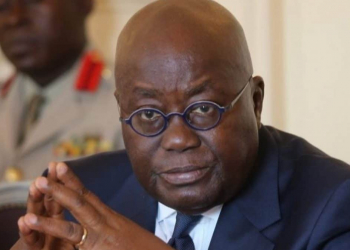The long-in-the-works Bus Rapid Transit (BRT) system, aimed at radically transforming public transportation in Accra, is set to commence operations next month, with a pilot beginning with one of four routes – Amasaman through Achimota to Circle and to the Central Business District at Tudu.
The pilot is expected to start with 28 buses, which will eventually be scaled up to a total of 245 buses when all four corridors become active.
The other corridors on the project include Mallam, Kaneshie to the Central Business District (CBD) in Accra, Adenta through 37 to the National Theatre to CBD, and the Beach Road from Ashiaman, Teshie, Labadi through to CBD.
For now, officials from the Greater Accra Passenger Transport Executive (GAPTE), say 28 buses will serve four main corridors, with the aim of operating as a full blown Bus Rapid Transit(BRT) system by the close of the year when additional buses come on board.
The Chief Executive Officer of GAPTE, Samson Gyamera, told the B&FT that: “we are actually at the stage where we are testing the IT infrastructure that is supposed to support the systems. We are talking about automated fare collection and scheduled bus services; it has to be controlled by an IT and communication infrastructure that we have created on the buses and our control room at Achimota depot. The control room oversees all the operations of the buses in real time and hopefully by the end of this month we should be able to roll out the services.”
The pilot buses have been christened and branded ‘Aayalolo,’ which means ‘we are going,’ officials say it is a continuous process.
The buses, the CEO explained, are automated such that, “you purchase a smart card and you top up the amount of money on the smart card, you use the card to board the bus, there is validator on boarding the bus; which automates the turnstiles, which allows you access to either sitting or standing and when you end your journey you also validate on exit and the system deducts the exact fare for the distance that you have covered and is deducted from you card. All of this is connected by an IT infrastructure”.
Mr Gyamera explained that “GAPTE is more or less a transport assembly in Accra and has been created by the 12 assemblies in [GAMA] with Awutu Senya being added as the 13th assembly.”
GAPTE, he said, is supposed to be a transport planning, network development and public transport regulator on behalf of the assemblies.
“The Local Government Act actually mandates the assemblies to regulate public transport within their jurisdiction; what this means is that they have the ability to set the rules for public transportation.”
He also said that “there are four corridors in Accra that studies have indicated lends themselves to big bus operations.
In view of the time-wasting traffic jams in the capital city, Mr Gyamera reckons that it is only a proper functioning mass transportation system that can stem the tide.
“Instead of using individual cars, the much more efficient use of the road space is to use big buses, because a big bus like ours takes 40 persons sitting and 46 standing, so it has a crash capacity of 86 persons. And if you are taking the equivalent of two persons in a car as we normally see, then that is taking the place of more than 40 vehicles.
So we can imagine that if we have a system where we have an efficient public transport arrangement that uses big buses, high occupancy vehicles that will be a much better use of the road space and to allow easy movement for all forms of vehicles on the road space than what currently persists”.
Sign up for Ghana Star News to receive daily email alerts of breaking news in Ghana. GhanaStar.com is your source for all Ghana News. Get the latest Ghana news, breaking news, sports, politics, entertainment and more about Ghana, Africa and beyond.


